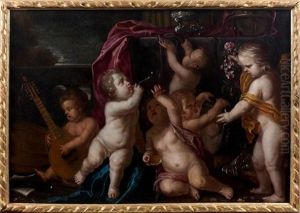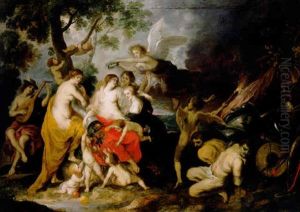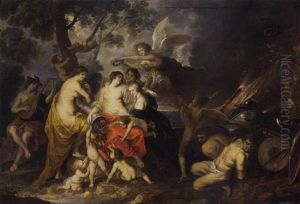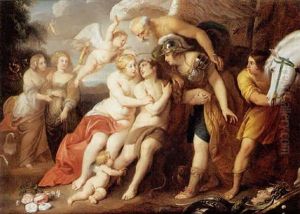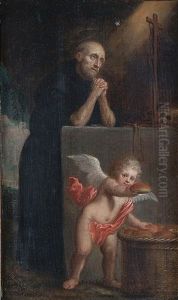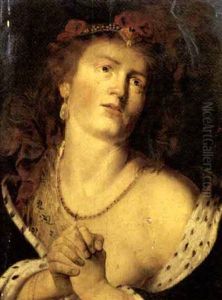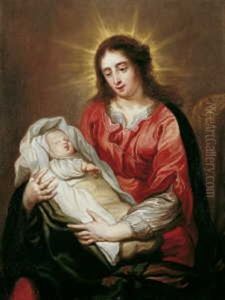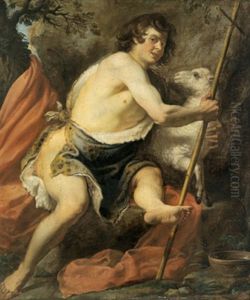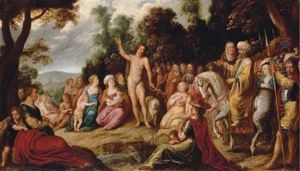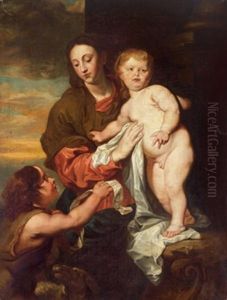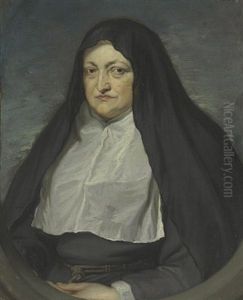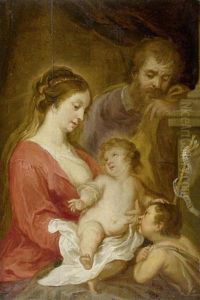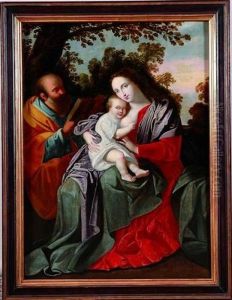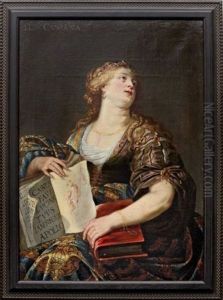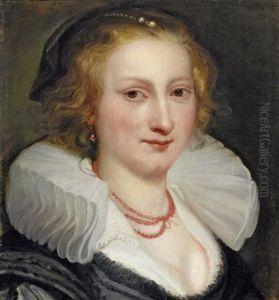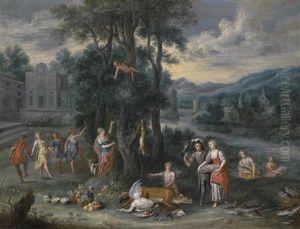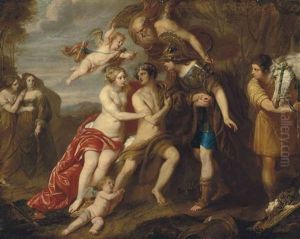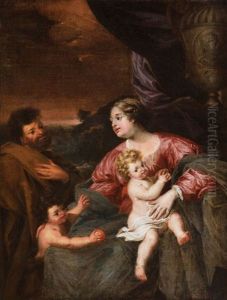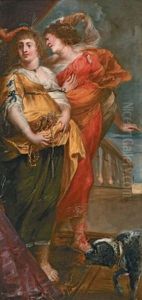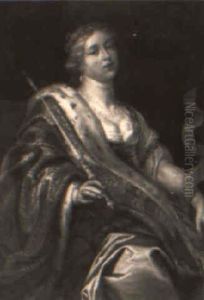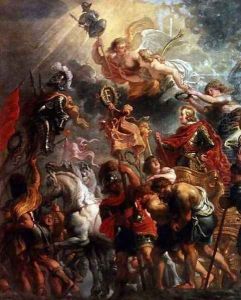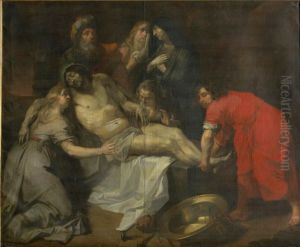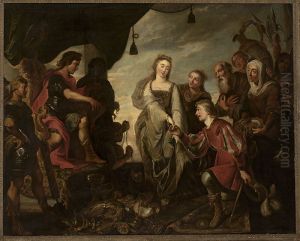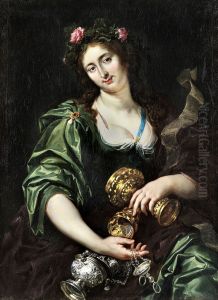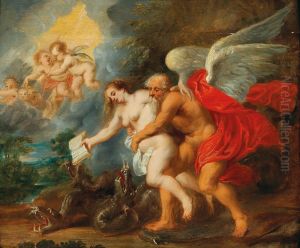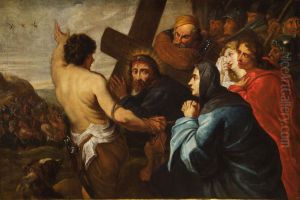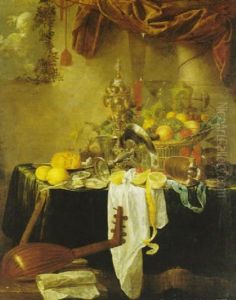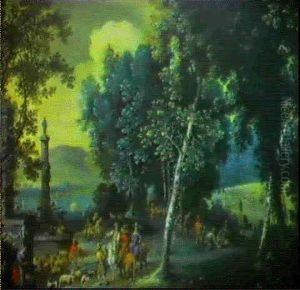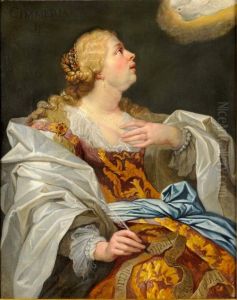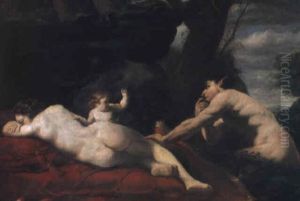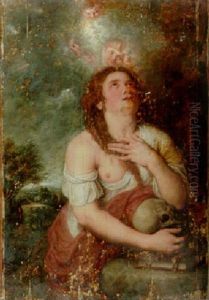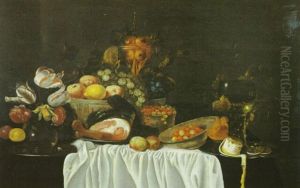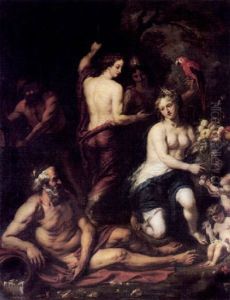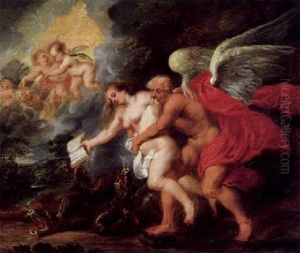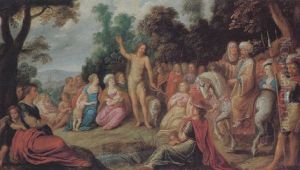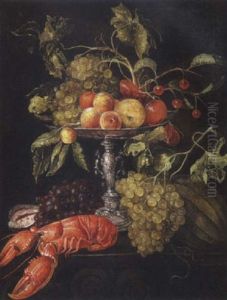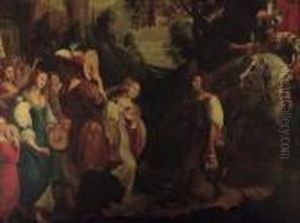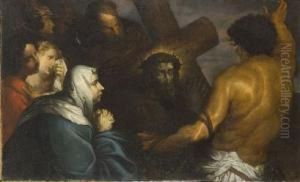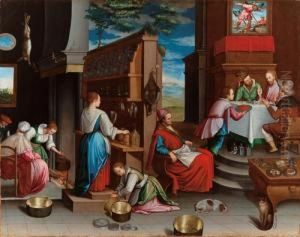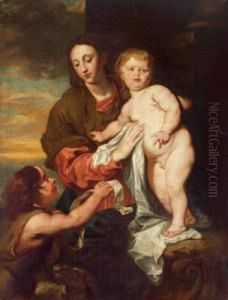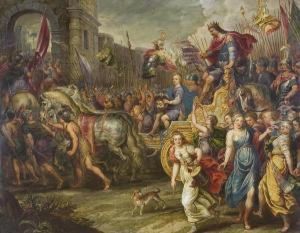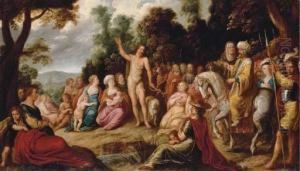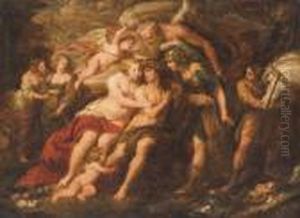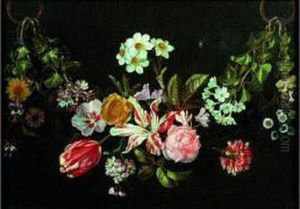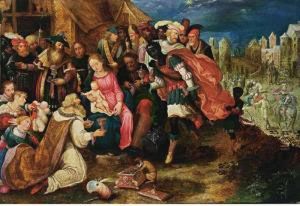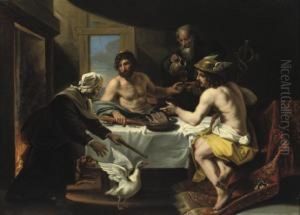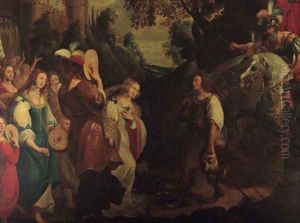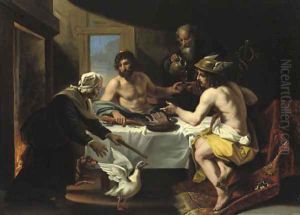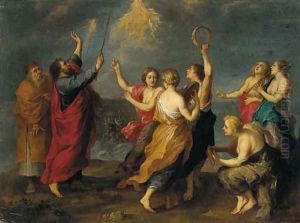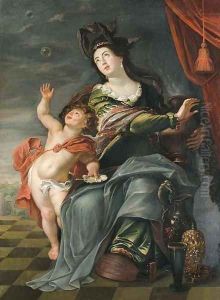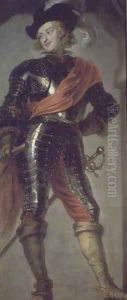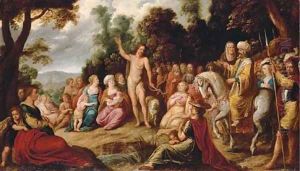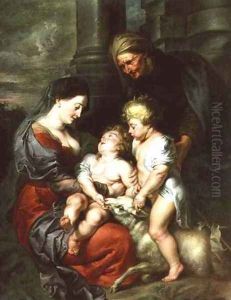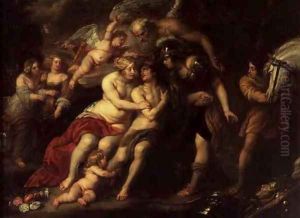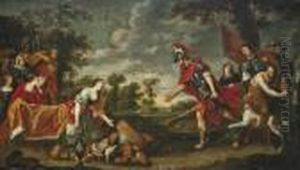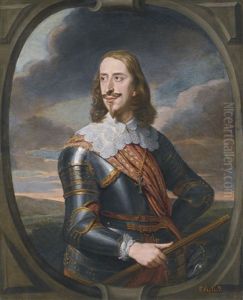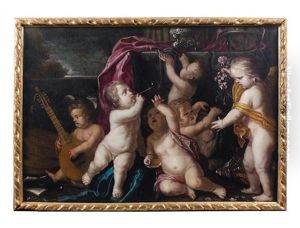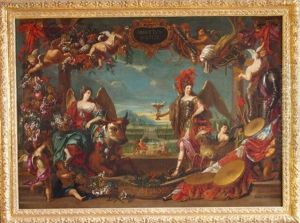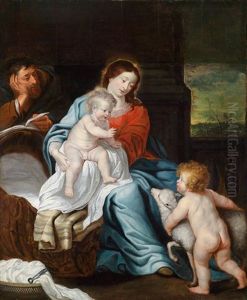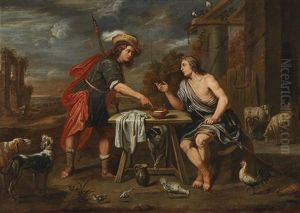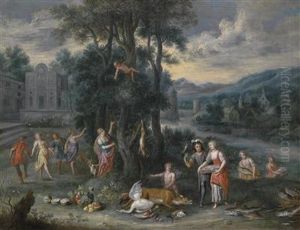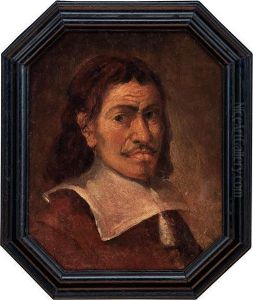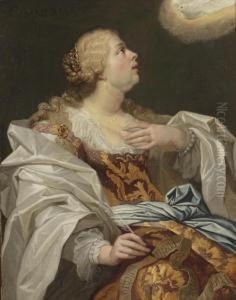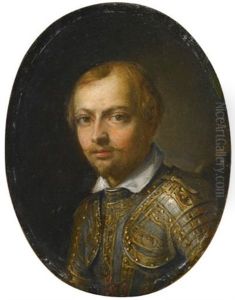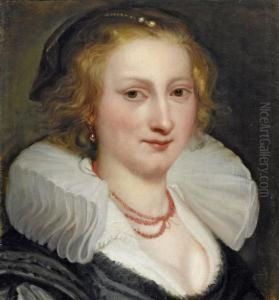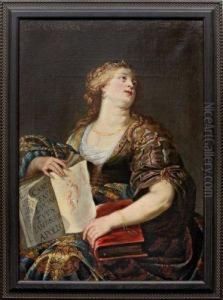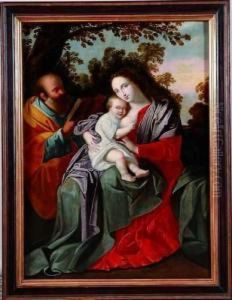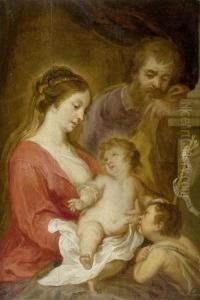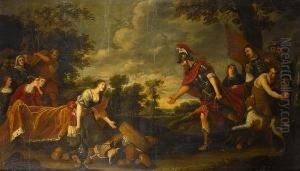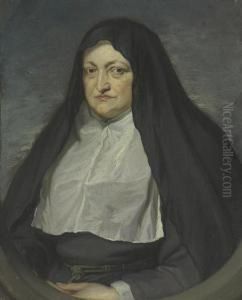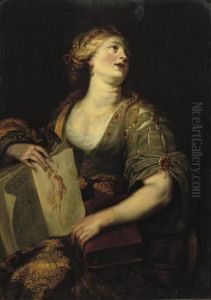Jan van den Hoecke Paintings
Jan van den Hoecke was a Flemish painter, draughtsman, and designer for tapestry. Born in Antwerp in 1611, he was the son of the painter Gaspar van den Hoecke and the brother of the painter Robert van den Hoecke. He was a versatile artist, known for his historical paintings, portraits, and allegorical scenes.
Jan was trained by his father and later became a pupil of the prominent artist Peter Paul Rubens. Under Rubens, he developed his skills in painting and drawing and was influenced by his master's baroque style, which is evident in Jan's dynamic compositions and strong use of light and shadow. Jan van den Hoecke's works often reflected the rich and energetic baroque style of the period.
After studying under Rubens, van den Hoecke traveled to Italy, where he was influenced by the works of the Italian masters. His Italian journey was crucial in his development as an artist, and upon his return to Flanders, he brought back with him the grandeur and monumentality typical of the Italian baroque. He became a master in the Guild of Saint Luke in Antwerp in 1636, indicating his recognition as a professional artist.
Jan van den Hoecke worked for the court of Archduke Leopold Wilhelm of Austria, the Governor of the Spanish Netherlands. He created numerous works for the Archduke, including portraits and religious paintings, which contributed to his reputation as a court painter. His style continued to evolve, and he began to incorporate more classical elements into his work, a testament to his Italian experiences.
Throughout his career, van den Hoecke was also involved in the design of tapestries, a popular art form in Flanders during the 17th century. His contributions to tapestry designs further demonstrate his versatility and artistic ability.
Jan van den Hoecke's paintings are characterized by a strong sense of composition, vivid coloration, and adept handling of light. Despite his relatively short life, he left behind a body of work that reflects the opulence of the baroque era in the Southern Netherlands. He died in Antwerp in 1651, leaving a lasting impact on the Flemish art scene of his time.
